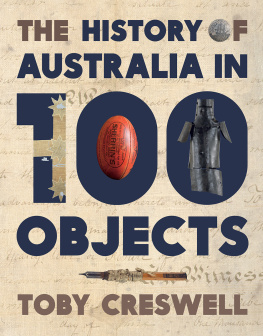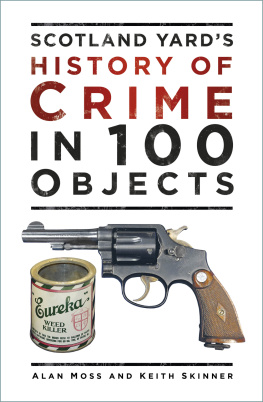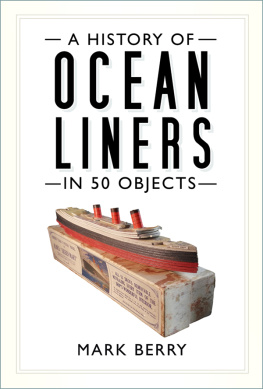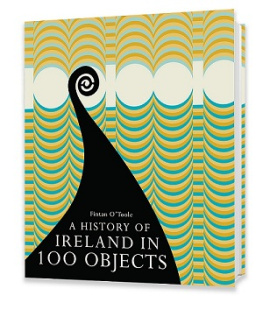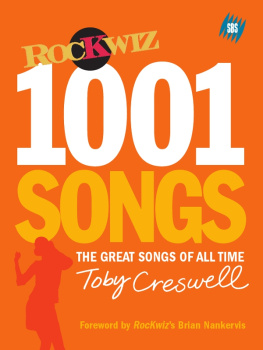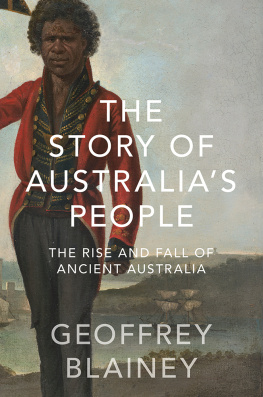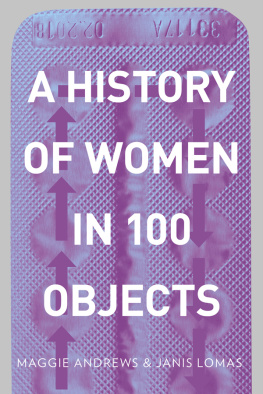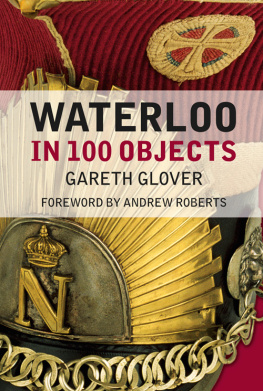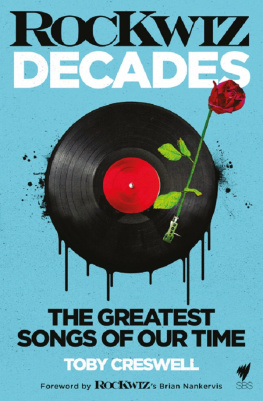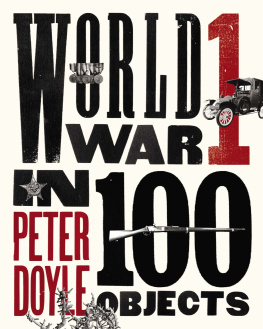From Captain Cooks globe to Mabos map, and Melbas frock to Cathy Freemans running suit, this is Australias history told through a gallery of things.
ACKNOWLEDGEMENTS
There are more than 100 objects that tell the history of Australia. The selection criteria for this book was inspired partly around museum collections to ensure readers have some hope of seeing these objects. However, some items are from other sources, depending on the story and the images available. Some of these stories are of the great upheavals in Australian society, like the Rum Rebellion, World War I, Federation and Reconciliation. Sometimes these big stories were most powerfully represented by a small object that belonged to a person whose name was never widely known, like the beautiful Heidelberg dress that tells of the sorrow and the desperation of the Depression, or a simple cup and saucer from the Country Womens Association, which did more to settle the outback than any number of explorers. The history of Australia is enshrined in acts of Parliament and wars and the exploits of great men. But it is also enshrined in the lives of ordinary Australians black and white, Asian, Indigenous and European. So I hope there is a balance struck. Every picture...
There would be no pictures in this book but for Samantha Trenoweth, who wrangled bureaucracies, and Giovanna Trenoweth, who took beautiful pictures. Thanks go to Ben Ball for commissioning this book and to Rachel Scully who did hard yards with me on the manuscript; to John Canty who perfected the design; and to editors Katie Purvis and Clementine Edwards, and proofreader Nikki Lusk, all of whom helped it over the line.
For tea and sympathy, Id like to thank: Jolyon Burnett, Tara Anderson, John ODonnell, Martin Fabinyi, Larry Meltzer, Kate Butchart, Martin Pedersen, Rachel Perkins, Lisa Anthony, Mark Danta, Tony Pooley, Joanna Quilty, Tony Mott, Catherine Courtenay, Anne Briggs, Geoffrey Datson, Anna Christie, Geoff Peterson, Carlson Loke, Sharon Draper, Ross Brookes, Bob Short, Clinton Walker, Paul Goldman, Gail Mabo, Ian Jones, Deborah Tobias, Tim Singleton, Michael Creswell and Philip and Gwen Creswell, Ann, James and Sean Trenoweth and Glenda Fisher and Artemesia Trenoweth.
For going above and beyond, Id like to thank: Jane Burridge, Annette Hughes and Denis French at the National Museum of Australia; Kathy Hackett at the Powerhouse Museum; and Val Brown, Mary Morris and Lorenzo Iozzi at Museum Victoria.
Additional thanks to June Oscar, Jenny Kee, Rosemary Wilson, Wendy Farley, Enrico Maltoni; Kate Boesen, Margy Burn and the team of librarians at the National Library of Australia; Nina Gerace, Marielle Smith and Bruce Wolpe from the Office of the Honorable Julia Gillard; Tim Fisher at the Arts Centre, Melbourne; Sophie York and Michael Greg at Museum WA; Ron Schroer and team at the Australian War Memorial; Janine Flew at the Australian National Maritime Museum; and Barbara Robinson-Tan from the Sisters of St Joseph.
2013
Julia Gillards spectacles
A womans work
Prime Minister Julia Gillard kicked off the election year of 2013 with an address to the National Press Club on 30 January. The following day the political stories in the news fought for space with stories about her Oliver Peoples rose-red spectacles. Why these glasses should be so controversial explains part of the Gillard prime ministership; women in power are scrutinised differently.
On 8 October 2012, Prime Minister Julia Gillard fielded a question from Tony Abbott, the leader of the Opposition. The question related to text messages sent by Abbotts good friend but now political enemy the Speaker of the House, Peter Slipper. The private but sexually explicit messages were in poor taste and Abbott taunted Gillard about them.
Gillard rose and opened her answer with:
I will not be lectured about sexism and misogyny by this man. I will not. And the government will not be lectured about sexism and misogyny by this man. Not now, not ever. The leader of the Opposition says that people who hold sexist views and who are misogynists are not appropriate for high office. Well, I hope the leader of the Opposition has got a piece of paper and he is writing out his resignation. Because if he wants to know what misogyny looks like in modern Australia, he doesnt need a motion in the House of Representatives he needs a mirror. Thats what he needs. Lets go through the Opposition leaders repulsive double standards...
Gillard enumerated in the parliament the double standard, the sly sexism that operates in our society. Its a world in which women have the apparent trappings of equality but are not the equal of men. Its a world where women are still doing the ironing while men look after the big jobs.
Gillards speech stopped the nation in its tracks for its passion and its plain speaking. It was reported all over the world the only time in 200 years that an Australian prime ministers remarks have been. Australian women, even the legion who otherwise despised Gillard, recognised that for the first time someone had articulated the sexism and discrimination they put up with on a daily basis.
The 27th prime minister of Australia and the 13th Labor prime minister, Julia Gillard was the first woman to hold the top job and the first woman to lead the ALP. She was, even for years before that, a character who fascinated and polarised the Australian public. Unlike other ambitious politicians, Gillard never married, never pretended to have religious beliefs, spoke with a very broad accent, and in one of her first major photo shoots posed in a kitchen with an empty fruit bowl and little evidence of hominess. These characteristics were commented on incessantly. One especially uncouth Liberal politician accused her in parliament of being barren.
There is a general sense that sexism goes unremarked. Women are supposed to put up with it because they are good sports or because its beneath them to acknowledge it. The fact that women make up 50 per cent of the population and yet only 3.7 percent of prime ministers goes completely unremarked. Gillards ascent to the top job was a lightning rod for men and women in Australia who were threatened by the idea of a woman being in charge.
Gillards position was not helped by the coup that installed her in power. She had been deputy to Kevin Rudd following the 2007 election. By 2010 most of the government had lost confidence in Rudd as prime minister and believed that the ALP was facing defeat at the imminent election. Gillard stood against Rudd and won the prime ministership, but was thereafter seen as a traitor. Her ascent over Rudd was the same as that of Bob Hawke over Bill Hayden, Paul Keating over Hawke, John Howard over a number of people and Rudd over Kim Beazley, but Gillard was painted as a Lady Macbeth and never transcended that archetype. The fact that Rudd launched a relentless destabilisation campaign against her helped neither Gillard nor her government.

